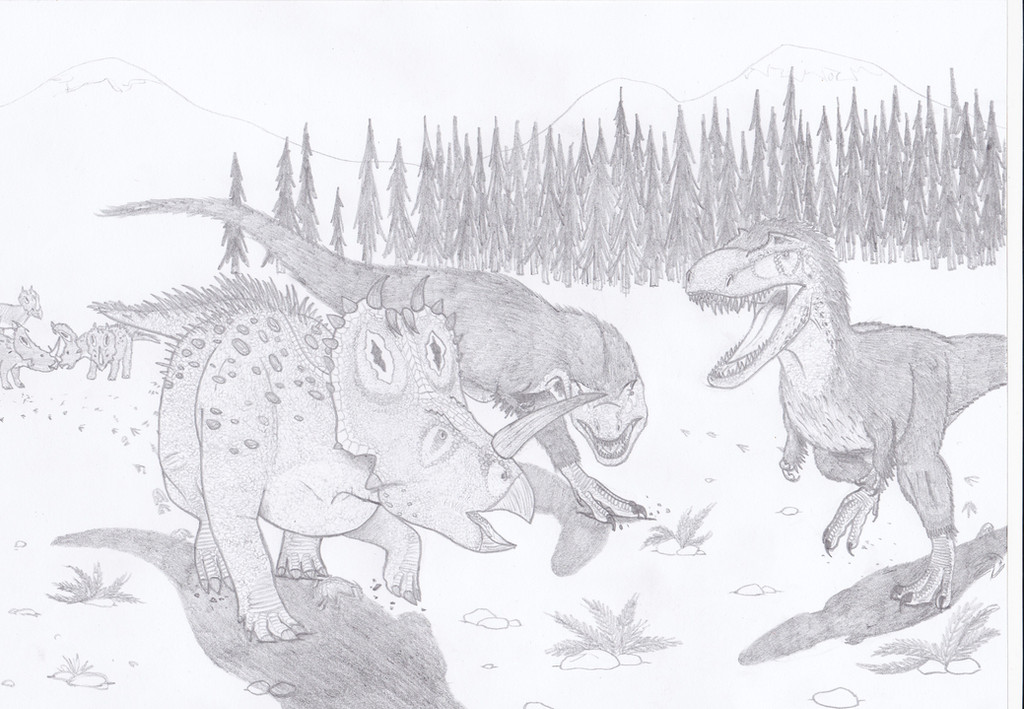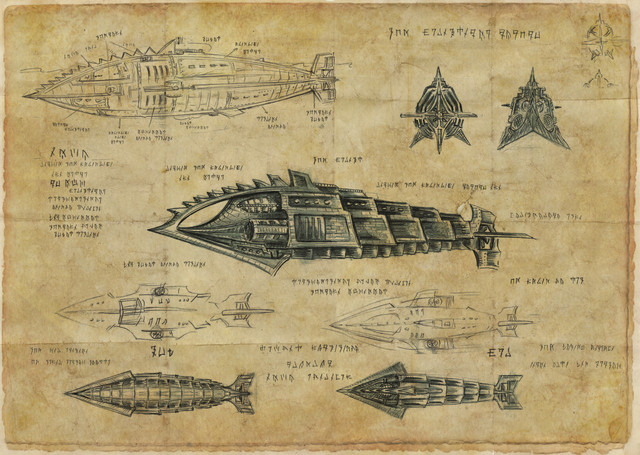HOME | DD
 Dontknowwhattodraw94 — Separated from the herd
Dontknowwhattodraw94 — Separated from the herd

Published: 2013-10-25 14:56:25 +0000 UTC; Views: 2030; Favourites: 36; Downloads: 14
Redirect to original
Description
Canada, 75 million years ago:Two Gorgosaurs managed to separate a Centrosaurus from it's herd, chasing it so it'll get tired and easier to kill. However, the Centrosaurus is weaponed with a large horn on it's nose so he won't give in to quickly.
Gorgosaurus libratus is a (smaller) relative from T-rex that didn't exist yet. We don't know it was feathered, but it is in the same size range of the Chinese Yutyrannus huali (8-9 metres) of which is known it had feathers, so i decided to give him a coat to. I'm starting to except that maybe all Tyrannosaurs were feathered
Centrosaurus apertus is a smaller relative from Tricratops which, just like T-rex, didn't exist yet. Centrosaurus wasn't as big as his three-horned follower: just 6 metres long.
Thanks for watching, hope you liked it
Related content
Comments: 11

I think Centrosaurus would fight them off using the quills and the eyespots on the frill. The horn, being solid bone on an obese (therefore inflexible) animal would break in the heat of battle.
👍: 0 ⏩: 1

Would the horn really do that? I always saw it as the main defence weapon...
👍: 0 ⏩: 1

Most paleontologists nowadays no longer believe in the dramatic, traditional portrayal of the horn being used for defense. The variety of head designs was just too great for such a purpose. Besides, the horn would break because its median body width is just too great for sharp or straight turns. A rhino could use its head as a weapon because a) its horns are made of hair, which is lighter but much denser than bone and b) the median body width of a deer, an elephant, a rhino and even a bison is narrow, which allows them to make sharp turns and retreat in a straight line without being so awkward. The median body width of a hippo and a ceratopsian is broad, so they aren't agile.
👍: 0 ⏩: 1

Well, didn't know that. So they would possibly just use the markings on their frills as a display: for example line up to eachother making a wall of eyed frills to scare off an attacker? And the quills: I thought it wasn't yet proven for ceratopsians to have these, it was just a theory because of their presence in the Psitaccosaurus fossil (I just draw them sometimes on my ceratopsians)
Would this make them pretty vulnerable when in smaller groups or alone?
👍: 0 ⏩: 1

The frill is used as a lady-killer and a scare tactic against a predator. In a herd, so many eyespots on so many frills would give the predator a nightmarish acid trip. But if a ceratopsian were on its own, no predator would fall for the bluff. As for the quills, there's no evidence yet, but that doesn't mean it's wrong. As mentioned in the book All Yesterdays, our knowledge of paleontology is frustratingly limited. If the quills of a porcupine can have nasty consequences (there were reports of lions, leopards and humans dying from porcupine wounds!), then quills on a large dinosaur might not be so out-of-place.
👍: 0 ⏩: 1

Hmmm, like the stripes of a zebra for example. But of course a zebra can only kick and bite in self defence.
Anyway, thanks for the info, really didn't know about the horn-thing
👍: 0 ⏩: 0

You're welcome.
👍: 0 ⏩: 0




























